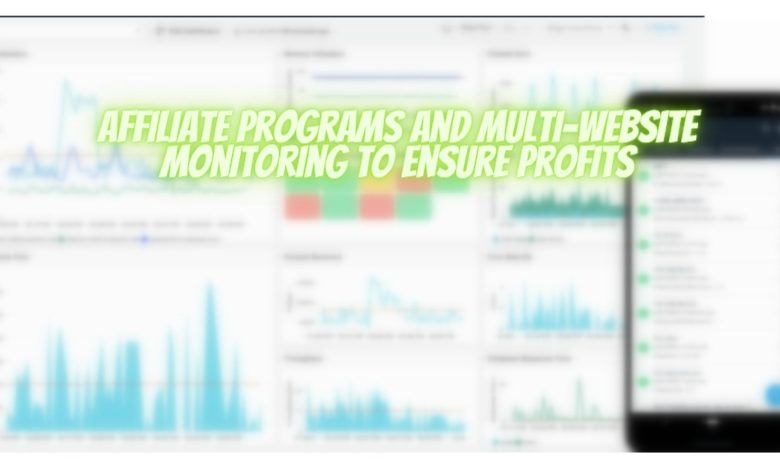Affiliate programs and multi-website monitoring to ensure profits

Almost all large online stores allocate a budget to affiliate programs. That is, they literally pay those who bring buyers to the website, providing advertising. In most cases, these are websites with reviews of products that are sold in the online store, or with reviews of the services that the company provides. But these are far from the only affiliate programs that different companies offer on the Internet.
Various affiliate programs for business
In a general sense, affiliate programs are a type of business cooperation between the seller of a product or service and its distributors. This form of cooperation is beneficial to both participants: the seller spends less effort and financial resources to sell his products, and the distributor receives income for each customer he attracts. The partner is interested in a large flow of customers because he receives a certain remuneration for each new customer. Moreover, affiliate marketing can generate much more income than contextual advertising from Google Ads.
CPC – cost-per-click
The seller pays the partner for each click on the advertiser’s website, in other words, for each click on the placed advertising banner. The amount of compensation depends on various factors: the topic of the advertiser’s website, and the location of the visitor. To measure the effectiveness of a special indicator named click-through ratio (CTR). He reflects the ratio of the number of clicks and displays of ads.
CPV – cost-per-view
The affiliate receives money for each view of the promotional video. Very often this form exists in conjunction with cost-per-click affiliate programs.

CPS – cost-per-sale
In this type of cooperation, the partner receives remuneration only if the client buys the product. As a rule, the webmaster who attracted him receives income as a percentage of the cost of goods. In rare cases the amount may be fixed. Gambling websites and casinos oftenly use this form of affiliate programs, as well as physical goods’ and virtual products’ online stores. According to the analytics, the Amazon Associates CPS affiliate program has the largest market share. The closest competitors simply do not exist – counterparts’ affiliate programs barely approach the 8% mark. All because websites under Amazon can generate more income than affiliate marketing with other services.
CPA – cost-per-action
The partner receives money if the client who clicks on the link performs a certain action. Basically, it is filling out questionnaires, registration forms, making email subscriptions to mailing lists, downloading a product. Dating websites, online games, virtual currency exchangers and others usually use CPA affiliate programs. Since basically all the actions are free, it becomes much easier to attract a customer than to make him buy the product. The advertiser, on the other hand, benefits because he can see the result and the real effect.
Multi-level affiliate programs
Multi-level marketing is becoming more and more popular every year. In this case, the advertiser builds a hierarchical system of promotion. That is, if “A” participates in a multilevel affiliate program, sells goods or services and involves “B” and “C” in cooperation, all of their future income will be reflected in the profit of “A”. Like a snowball, the scheme brings rewards to all participants, who may not even be aware of each other’s existence.
Multi-website monitoring for affiliate-related websites
The business website included in the affiliate program should work 24/7 without interruption with the highest possible uptime. Otherwise, it will not generate income. This is especially important for websites that are integrated into an affiliate network or work with several affiliate programs. And if it is one website, there will be no problems with monitoring its status and responding quickly to problems. But if there are many websites of one company, even an experienced webmaster will have problems with monitoring and fixing problems.

Imagine that you need to monitor at least five websites. Take into account all monitoring procedures. And then multiply these procedures by five, imagining how many tasks you will need to process. That’s when webmasters think about using automated website monitoring services, such as the HostTracker platform. This service can run full-scale multi-website check routines from more than 140 world-wide distributed points under various ISPs in various countries. Thus you’ll be able to find out when, where and why your website is malfunctioning at an instant.

In addition, the HostTracker has a responsive notifications system that allows users to be in touch with website status 24/7. It sends alerts via various messengers or, if the user is offline or out of reach, via SMS or phone calls. Moreover, the webmaster can set up a schedule for notifications and configure this system to send a minimum number of false alerts.




